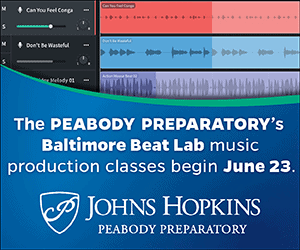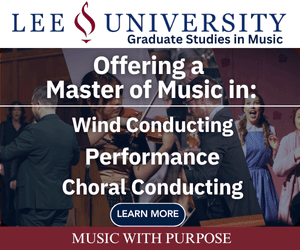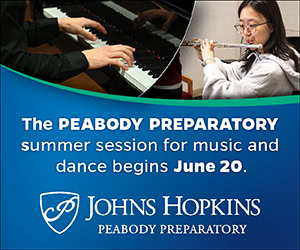NAfME BLOG
Resources for Learning the Violin Audition Excerpt: Mendelssohn Symphony No. 4, Mvt. 1

/ News Posts / Resources for Learning the Violin Audition Excerpt: Mendelssohn Symphony No. 4, Mvt. 1
Resources for Learning the Violin Audition Excerpt:
Mendelssohn Symphony No. 4, Mvt. 1
By NAfME Member Tomás Cotik
Copyright © by Tomás Cotik – All rights reserved.
The April 2021 issue of Teaching Music included an article by Tomás Cotik on guidelines for recorded auditions. This is article four of six supplementing that article.
Below, you will find a brief introduction about the piece followed by a couple of recommendations of orchestral recordings and a list of concise advice that focuses on solving the usual problems that I have seen students confront in terms of rhythm, bow strokes, articulation, dynamics, vibrato, intonation, and phrasing when working on this excerpt. Please take any advice only as a guide; any recommendation or list of typical tendencies does not apply to every student. Slow, mindful practice, continued work on the basics (Intonation, Rhythm, and Sound), recording yourself regularly, and feedback from a teacher is at least as important! At the end of the document, you will find a score with the fingerings and bowings I used in the video as well as the orchestral score of the excerpt.
Watch my own video recording of this excerpt on YouTube.
Background
During the eighteenth century, it was customary for educated young men to spend several months traveling across Europe in a quest for both personal and cultural maturity. Mendelssohn was on his own “Bildung” trip when inspiration struck for what later became his Fourth Symphony. Premiered in May of 1833, sketches for this aptly titled “Italian” Symphony date back to when Mendelssohn was traveling through the country in 1830–31. In a letter from Rome to his sister Fanny, Mendelssohn wrote, “It will be the jolliest piece I have ever done.” The colors and atmosphere of the first movement clearly convey the eager anticipation of travel and the impressions of pastoral landscapes that the young composer experienced while on his “Grand Tour” of Europe.
Listen:
Follow along with the full score as you listen to various recordings. A few examples:
- Listen to this video of Paavo Järvi with the Frankfurt Symphony Orchestra.
- And this one of Muti with the Wiener Philharmoniker.
Rhythm:
- Subdivide during the rests.
- Don’t compress the rhythms.
- Remember that crescendo does not mean accelerando.
- In measures 90 to 110, it’s tricky to keep the passage really steady and rhythmic. Articulate each individual note and feel the units of tempo (beat per half bar and bar) without forgetting the long line.
- Hear the running eighth notes of the winds in your head while you play and while you have rests.
Bow Stroke:
- FTS = From The String; for both the legato and staccato bow strokes.
- Use a lot of bow speed and a straight bow on the dotted quarter notes. You could think of the image of hitting a tennis ball with a racket: having maximum speed at the beginning of the stroke and following through the movement with inertia.
- Spiccato string changes: have the elbow floating in a “middle” position so that the wrist and fingers can do their work. It is always good to practice detache on the string and then just release the index a bit to allow the stroke to become “off-ish.” The ultimate feeling of the bow stroke is very close to that of when you play on the string. The bow comes off though its own elasticity.
- Keep the spiccato eighth note stroke economical. Check that the tip of the bow travels in a simple, clean, and small path (in other words, not all over the place).
- The last eighth note of each eighth note run should be equal in articulation to the previous notes, not longer.
- Use bow speed and vibrato for the sforzandos and accents.
Articulation:
- In addition to the start of each note, pay attention to the articulation at the end of each note.
- The upbeat eighth notes should not be too short.
- Don’t play the last note of phrases (before the rests) too long.
- Make sure that the first eighth note after a rest (and the eighth note upbeats) speaks/sings. Acoustically, these notes get swallowed if we don’t give them the proper attention.
- Similarly, the first short value note after a long note should speak clearly (for example, the D in measure 9). These notes tend to get swallowed acoustically if you don’t give them the proper attention.
- For the slurred eighth note passages, clear left-hand articulation is necessary.
- The dots on the eighth notes don’t mean spiccato. You might think of them as “on-ish” or “off-ish,” but not completely off the string.
Dynamics:
- Respect and anticipate the subito p in measure 19.
- In the p and pp sections, make sure to maintain the dynamic (do not start any crescendo).
Intonation:
- Don’t play the first pizzicato chord too loudly as this tends to distort the intonation. The C# should not be too sharp in the chord.
- Make sure that major second intervals going down are large enough.
- Take care of the pitch and resonance when using the 4th finger. When you have extensions to the 4th finger, consider releasing the first finger or rotating the hand to get there in tune without tension.
- Really differentiate between tight leading notes and wide major seconds in the chromatic passages, particularly in measures 19 to 20 and 90 to 109.
- No portatos (slides between notes).
Vibrato:
- Fast, narrow, and exciting vibrato should be used for the dotted quarter notes, quarter notes and for the sforzandos.
Phrasing:
- The structure is classical, the motif is compact, and the articulations are mostly short, but you still need to sing the notes and take care of the long lines for phrasing.
- Don’t accent last note of a phrase.
- The eighth note passages that start at measures 25 and 29 are “responses” to the winds. Listen to the winds in your mind so that you play those passages in context. Also do this in measure 66 where the winds precede and continue the eighth notes.
- Listen to the harmonic progression of the orchestra to inform your phrasing and intonation.
- At measure 33, don’t insist too much on the repeated E eighth notes. The violas have a more interesting part! Similarly in measure 73, the violas and cellos have the main motive.
- Follow the bass part on the score. It informs the syntax of the melody!
- From measure 90 on, feel the long line, a landscape without any bumps in the road.
Mendelssohn Symphony No. 4, Mvt. 1, Violin 1
Mendelssohn Symphony No. 4, Mvt. 1, Score
Read parts one, two, and three.
About the author:
Hailed by Michael Tilson Thomas as “an excellent violinist,” Dr. Tomás Cotik was a first-prize winner at the National Broadcast Music Competition in his native Argentina in 1997, and the winner of the Government of Canada Award for 2003-2005. An avid recording artist, Dr. Cotik has recorded fifteen CDs for Naxos and Centaur Records, which have received enthusiastic reviews from publications such as Gramophone, Fanfare, American Record Guide, Downbeat, and MusicWeb International. Dr. Cotik was a rotating concertmaster with the New World Symphony and has performed hundreds of recitals and chamber music concerts across the globe. Committed to passing on his passion for music, Dr. Cotik was appointed Assistant Professor of Violin at Portland State University in 2016. He previously taught at West Texas A&M University, Florida International University, and at the University of Miami’s Frost School of Music. His articles about pedagogy have been published in renowned international publications such as The Strad, the American String Teacher Journal, and the American Music Teacher Journal.
E-mail: tcotik@pdx.edu
Website: www.tomascotik.com
Did this blog spur new ideas for your music program? Share them on Amplify! Interested in reprinting this article? Please review the reprint guidelines.
The National Association for Music Education (NAfME) provides a number of forums for the sharing of information and opinion, including blogs and postings on our website, articles and columns in our magazines and journals, and postings to our Amplify member portal. Unless specifically noted, the views expressed in these media do not necessarily represent the policy or views of the Association, its officers, or its employees.
March 11, 2021. © National Association for Music Education (NAfME.org)
Published Date
March 11, 2021
Category
- Ensembles
Copyright
March 11, 2021. © National Association for Music Education (NAfME.org)




